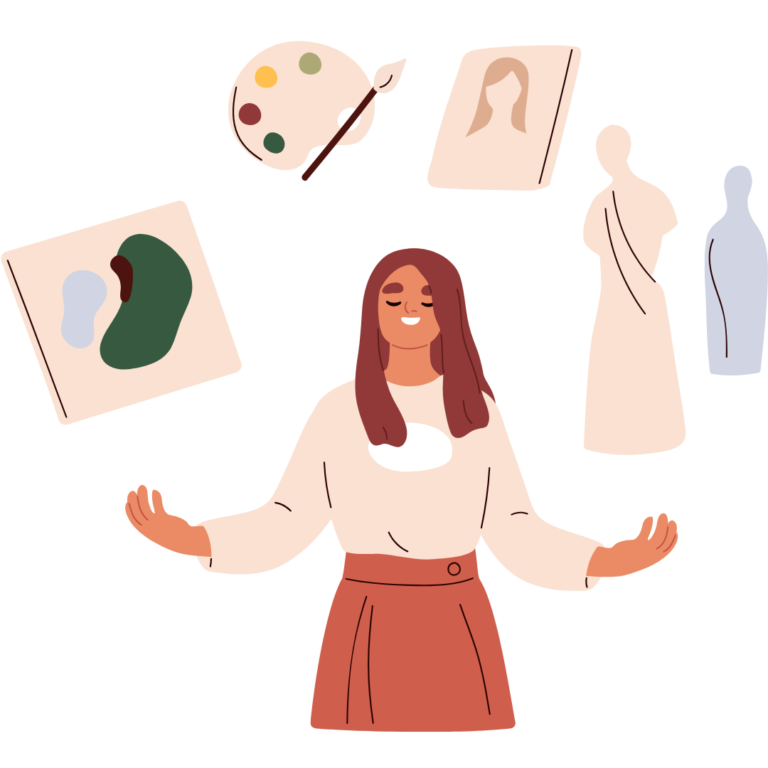Exploring Creative Outlets for Emotional Expression
Emotional expression is a key part of maintaining good mental health, and for students facing the challenges of academic life, finding healthy outlets can be crucial. Creative activities like drawing, writing, and playing music offer excellent ways to process emotions, reduce stress, and improve mood. Let’s explore some of these activities and how they can help you express and understand your feelings better.
- Drawing and Painting
Why It’s Helpful:
Visual arts like drawing and painting can help externalize complex emotions, giving them form and color on paper or canvas. The creative process itself can be meditative, while the finished product provides insight into one’s inner state.
Getting Started:
- Begin with Doodling: Start by doodling shapes, lines, or whatever comes to mind. This warm-up can help ease tension.
- Color Your Mood: Use colors that represent your emotions. Bright colors for happiness or dark hues for sadness can help translate feelings visually.
- Art Journaling: Combine drawings, collages, and written notes in a sketchbook to track your thoughts and progress over time.
2. Writing and Journaling
Why It’s Helpful:
Writing helps clarify your thoughts and provides a safe space to voice fears, joys, and frustrations. It’s a private outlet that can reduce mental clutter and help you organize feelings.
Getting Started:
- Stream of Consciousness Writing: Set a timer for 10 minutes and write down whatever comes to mind without filtering. This unstructured writing can bring hidden emotions to light.
- Creative Stories or Poetry: Express your feelings through fictional characters, poems, or metaphors, which can feel safer than writing directly about yourself.
- Daily Gratitude List: Write down 3-5 things you’re grateful for each day to cultivate positivity.
3. Playing Music and Singing
Why It’s Helpful:
Music can match your mood or change it. Playing an instrument or singing taps into emotional states and allows you to channel those emotions through melody and rhythm.
Getting Started:
- Learning an Instrument: If you’re a beginner, start with simple instruments like the ukulele or keyboard. Tutorials can be found on platforms like YouTube.
- Creating Playlists: Curate playlists that reflect your emotions. Have a soothing one for relaxation and an upbeat one for motivation.
- Singing Practice: Sing along to your favorite songs or hum melodies. You don’t have to be a pro—just let the music move you.
Resources: Managing Anxiety Worksheet
Students struggling with anxiety can download the “Break It Down: Assessing Anxiety” worksheet, a valuable tool created by Mental H2O to help identify and cope with anxiety triggers. The worksheet provides exercises to help you:
- Identify Your Anxious Thoughts: Learn to distinguish between thoughts based on facts and those driven by feelings.
- Evaluate Reality: Assess the likelihood of your anxious thoughts occurring, helping you to ground your thoughts in reality.
- Replace Thoughts Constructively: This section guides you on how to replace irrational or anxiety-driven thoughts with more positive, realistic thinking, and plan positive activities to replace anxious thoughts.
You can access this worksheet below.
Break it down anxiety reflection worksheet (US Letter)
Creative outlets offer a safe and productive way to express emotions that may be difficult to articulate verbally. Whether through art, writing, or music, the process of creating can be a healing and affirming practice. Embrace your creativity and let it guide you on your journey to emotional well-being.


